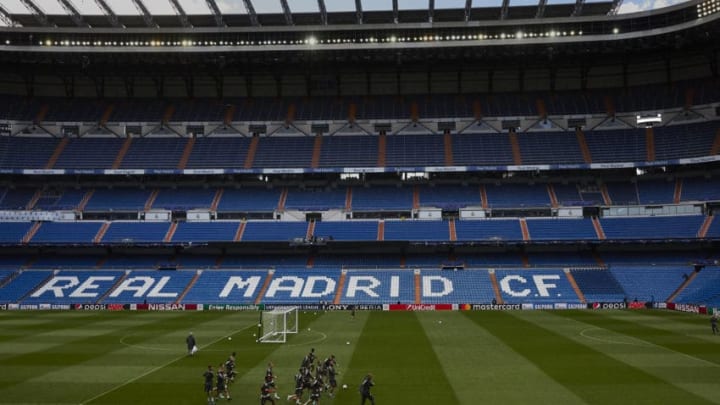With the UEFA Super Cup tie against Atletico Madrid now just a couple days away, the preseason is coming to a close. With what we’ve seen so far, Real Madrid displayed something that has long been a criticism – there now seems to be a system in place.
With Real Madrid in transitioning into a new era and Zinedine Zidane and Cristiano Ronaldo having both departed, a new dawn is arising in the Spanish capital. Julen Lopetegui is the new man at the helm, Gareth Bale is the new talisman of the team – there are definitely more questions than answers, however, a recurring sight throughout the preseason was that Los Blancos now has structure and a system.
A common criticism of Zizou was his lack of tactical nous. Many thought his effective ego control was the main contributor to his successes, which is an argument that can be made. However, the Frenchman did sometimes show he could be tactically astute, though, one of his biggest issues? The lack of structure and system within the team.
It often felt like Zidane collated his individuals to play in a formation and would then rely on their individual brilliance as a way of gaining a result. Whether it was Ronaldo’s killer instinct, the midfield genius of Isco, Modric, and Kroos, the attacking dynamism of Marcelo and Dani Carvajal or the steel of Sergio Ramos – when the moments of brilliance arrived, few could match it.
However, when the individuals couldn’t muster up those moments, it often led to calamitous displays. Look at Zidane’s final home El Clasico as an example. When the individuals weren’t shining, his lack of tactic and plan B saw the team completely collapse and every single weakness was exploited tenfold.
Lopetegui seems to be building a team less reliant on individual brilliance but instead, they are a cohesive unit. A well drilled and structured unit. Throughout the entirety of preseason, Madrid has shown a fluidity and structure that has not been seen in some time.
Often through the preseason games, Real Madrid has started in the 4-3-3 formation. The front three forwards have often pressed the backline of the opposing team, whilst this creates a little space for their goalkeeper, it limits and cuts the passing options to the defenders in front of the keeper, in short, forcing a mistake or forcing them to play long and hopeful passes.
Behind the front line, the three in midfield also collectively press all passing options, which in turn will lead to the team winning the ball back higher up the field. As seen in the example below:
Another standout is the complete structural organization in the build-up of attacks. The players are all making clever off the ball movements and there is a clear display of forward thinking.
More from The Real Champs
- Manchester City hold talks over Real Madrid target
- Real Madrid player confirms he is playing with a fracture
- Real Madrid superstar rejected Premier League clubs confirmed
- Spaniard ready to join Real Madrid instead of Liverpool
- PSG want €100 million Real Madrid player to replace Kylian Mbappe
The players will pass within triangles where you’ll see moments when players drop deep to provide an option to further progress the attack or interchanging positions as opposed to roaming pointlessly as Bale and Asensio often do, plenty of runs off of the defensive shoulder. Above all, there were very few times where the team looked stagnant.
Kroos was often used as a single pivot, playing deep and dictating the tempo of the game. A role he also thrives in, we then saw the other two midfielders playing advanced up the field, providing extra options and opening up spaces for others to run in too.
However, Casemiro seemed to be a little lost in the shuffle at times. We saw the Brazilian in a more advanced role than usual, though, it was clear he is either not suited to the role or he was still lacking in fitness. He provided little to no option and didn’t offer as much as Dani Ceballos did in the build-up in the same role. Though, judging by their time at Porto together, Casemiro shouldn’t be worried about being dropped from the side.
The attacking trident was incredibly interesting to spectate also. We often saw the three forwards changing roles, though, there was always an option in the form of a run or an open pass.
We often saw Bale and Asensio peeling from defenders as a result of the others dropping deeper and taking a man with them. The consistent off the ball movement saw spaces opening up, this proved beneficial not just for the front three, but also for the fullbacks and midfielders who would run in behind and cause an overload.
Defensively, the team seems to be defending better as a unit. The wide players are tracking back which will see the team morph into something of a 4-5-1 in their defensive shape. This allows for the fullbacks to be helped far more and also ensures a little more solidity than we’ve seen in recent times.
There was less of the fullbacks being caught out of position or the center-backs being stretched in order to cover ground.
However, the most interesting takeaway from preseason so far has been the pressing game. The team seems far more consistent and effective in their pressing than before. With the entire squad pressing as a unit, it’s providing more chances. This is something we’ve not seen consistently from Madrid and it is definitely a welcomed improvement.
With the new season now getting started in just a couple days – Real Madrid fans can be a little more appeased. Whilst there are still a few uncertainties, there are plenty of promising signs. The team has a plethora of young talent, they’ve kept hold of Luka Modric, and there could still be more signings.
